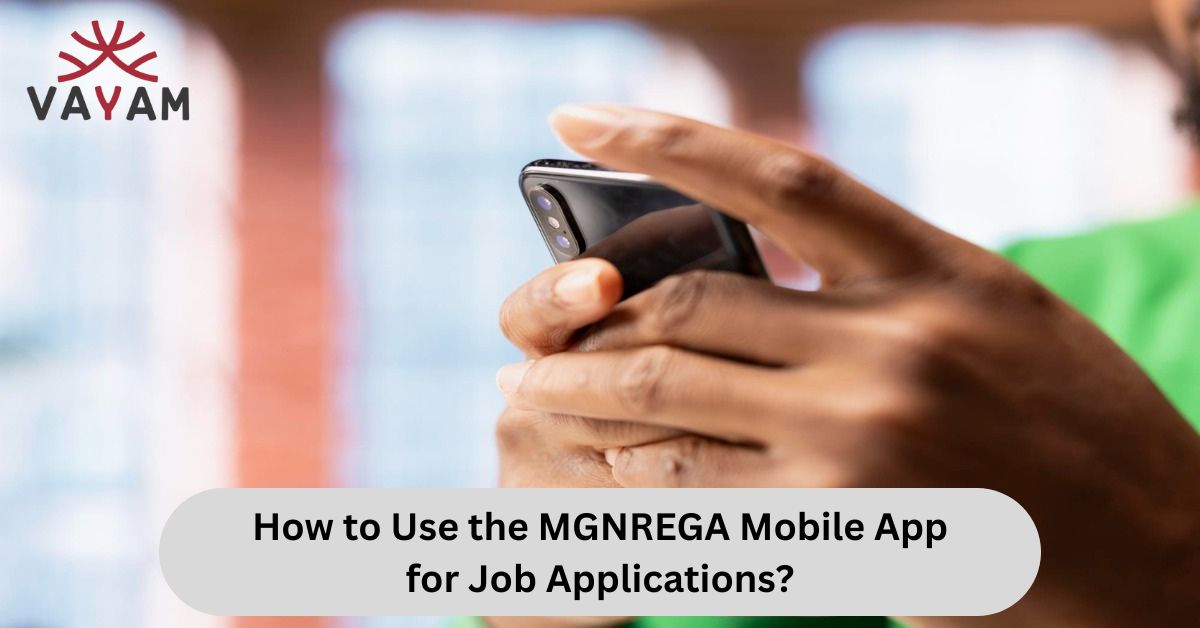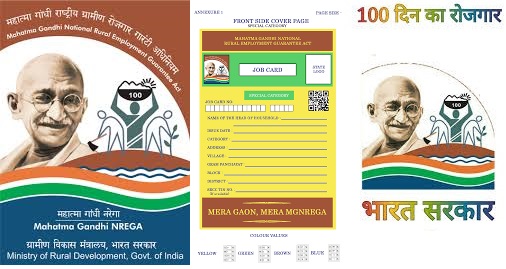
Hey, have you ever felt stuck waiting in long lines at the local panchayat office, filling out forms by hand, only to worry if your paperwork got lost in the shuffle? If you’re a rural resident in India looking for reliable work opportunities, you’re not alone.
The Mahatma Gandhi National Rural Employment Guarantee Act (MGNREGA) promises up to 100 days of paid work per year, but getting started can feel like a hassle. That’s where the MGNREGA mobile app comes in specifically through the UMANG app, which makes applying for a job card and managing your applications way easier right from your phone.
In this blog, we’ll walk through everything you need to know about using the app to kickstart your job hunt under MGNREGA. Whether you’re new to the scheme or just tired of the old ways, stick around. By the end, you’ll have a clear plan to get your job card and start applying for work without the usual headaches.
Quick Overview: What Makes MGNREGA a Game-Changer for Rural Workers?
Before we dive into the app, let’s talk about why MGNREGA matters. Launched back in 2005, this government program guarantees wage employment to any adult in rural areas who wants it.
Think road building, water conservation, or farming support jobs that help your community and put money in your pocket. The daily wage is around ₹200-300, depending on your state, and payments hit your bank account within 15 days.
But here’s the catch: To access these jobs, you need a job card. Without it, you’re sidelined. Traditional methods mean trekking to the Gram Panchayat, dealing with crowds, and hoping your details are entered correctly. The pain? Lost time, frustration, and sometimes even rejected applications because of errors. The UMANG app flips this script. It’s a free government app that lets you apply online, track progress, and download your card—all from home. No more guesswork.
If you’ve got a smartphone and basic internet, you’re set. And if not, many villages have common service centers where you can borrow a device. Ready to simplify things? Let’s get you started.

Step 1: Getting the App on Your Phone
First things first, download the UMANG app. It’s available for both Android and iOS, and it’s super lightweight, so it won’t eat up your data or storage.
- Head to the Google Play Store (for Android) or Apple App Store (for iOS).
- Search for “UMANG” – that’s Unified Mobile Application for New-age Governance.
- Tap “Install” and wait for it to finish. It takes just a minute or two.
Once installed, open the app. You’ll see a clean home screen with icons for different services. If you’re new, you’ll need to register. Enter your mobile number, get an OTP, and set up a simple PIN. Boom you’re in. No fancy email or complicated passwords required.
If data is spotty in your area, download the app over Wi-Fi at a friend’s place or the panchayat. And remember, the app works offline for some features, like viewing saved forms, so you can fill things out anywhere and sync later.
Step 2: Finding MGNREGA Services in the App
Now that you’re logged in, it’s time to hunt for MGNREGA. The app has hundreds of services, so use the search bar at the top—type “MGNREGA” or “NREGA job card.” It should pop up under the Ministry of Rural Development section.
Tap on it, and you’ll see options like:
- Apply for Job Card
- Check Job Card Status
- Download Job Card
- View Wage Payments
These cover the basics from registration to tracking your earnings. If your state has extra features, like direct work demand forms, they’ll show up here too. For most folks, starting with the job card application is key—that’s your ticket to demanding work.
Pain point alert: Ever applied at the office only to wait weeks without updates? The app lets you check status anytime, cutting that anxiety in half.

Step 3: Applying for Your MGNREGA Job Card A Simple Walkthrough
Alright, let’s tackle the main event: submitting your job card application. This is where the app shines, turning a paperwork nightmare into a quick digital fill-in-the-blanks.
Here’s how to do it, step by step:
1. Launch the Service: From the MGNREGA section, select “Apply for Job Card.”
2. Enter Your Details: The form asks for basics—your full name, gender, date of birth, address (village, block, district), and Aadhaar number if you have one. Don’t worry if you don’t; you can add it later for faster payments.
3. Add Household Info: MGNREGA covers households, so list other adult members (18+ years) who might work. Include their names and relationships. This ensures the whole family can benefit.
4. Upload a Photo: Snap a clear selfie or use an existing one. The app guides you—no need for professional shots. Keep it simple: face forward, good lighting.
5. Review and Submit: Double-check everything. The app highlights errors, like missing fields. Hit “Submit,” and you’ll get a reference number. Save it it’s your proof.
The whole process? Under 10 minutes if your info is handy. Once submitted, the local Gram Panchayat verifies it (usually within 15 days). You’ll get a notification in the app when it’s approved.
What if verification drags? That’s a common gripe delays due to missing docs or office backlogs. Solution: Keep copies of your Aadhaar, ration card, or voter ID ready. And use the app’s status check to follow up digitally.
Step 4: Demanding Work From Card to Actual Jobs
Got your job card? Great—now demand the work. Under MGNREGA, you have the right to ask for employment within 15 days of your request. While the app handles registration smoothly, demanding work is often a mix of digital and local steps.
Via the App (Where Available): In some states, UMANG lets you submit a work demand form right there. Select “Apply for Work” if it’s listed, fill in how many days you want (up to 100), preferred type of work, and submit. You’ll get an acknowledgment.
Traditional Way with App Support: If not in the app, write a simple letter on plain paper to your Sarpanch or Program Officer. State your job card number, days needed, and sign it. Drop it at the panchayat. Then, use the app to track if your demand is registered.
The app’s real magic here? Monitoring. Once work starts, check daily attendance, wage slips, and payments. No more chasing officials for updates.
Imagine this: Last monsoon, Raju from a small village in Bihar waited two weeks for his wage info. With the app, he now sees it instantly saving trips and arguments.

Tracking Your Application and Payments Stay in the Loop
One of the best parts of the app is real-time tracking. Forgot where your application stands? No sweat.
Check Status: Go to “Job Card Status” and enter your reference number or job card ID. It shows pending, approved, or rejected with reasons if needed.
Download Your Card: Once issued, download a digital copy. Print it if you want the physical version.
Wage Tracking: Under “View Payments,” see musters (attendance sheets) and bank credits. If delayed, the app flags it, so you can complain via the grievance section.
This solves the big pain of uncertainty. Surveys show over 70% of workers face payment delays the app helps you spot and fix them fast.
Common Hurdles and How to Jump Over Them
Even with the app, things aren’t always perfect. Let’s address some real issues folks face:
| Issue | Why It Happens | Quick Fix |
| App Crashes or Slow | Weak internet or old phone | Update the app, clear cache, or use at peak signal times. Try web.umang.gov.in on a basic browser. |
| Aadhaar Not Linking | Mismatch in details | Visit a nearby CSC for help; they fix it for free. Double-check spellings. |
| No Work Allotted After Demand | Local shortages | Demand from neighboring panchayats— the scheme allows it. Follow up in person if needed. |
| Forgot Reference Number | Slipped your mind | Log back in; the app saves history. Or note it in your phone’s notes. |
These tips come from user stories—simple changes that keep you moving forward without frustration.

Extra Tips to Make the Most of Your MGNREGA Journey
Want to go beyond basics? Here are a few ways to get more value:
Group Up: Apply as a family or with neighbors. More hands mean bigger projects and steady work.
Learn Skills on the App: Some versions link to training modules for better-paying tasks, like masonry.
Report Issues Early: Use the feedback button in UMANG to flag problems. Your input improves the system for everyone.
Stay Updated: Enable notifications for scheme changes, like wage hikes (recently up 10% in many states).
By treating the app as your daily tool, you’ll not just apply for jobs—you’ll build a reliable income stream.
Read More
How MGNREGA is Strengthening Agricultural Supply Chains?
How to Conduct Surveys to Improve MGNREGA Effectiveness: A Comprehensive Guide
Understanding Role of Panchayats in MGNREGA Implementation
Wrapping Up: Your Next Step to Secure Work
There you have a straightforward guide to using the MGNREGA mobile app via UMANG to land those job opportunities. From downloading to tracking payments, it’s designed to cut the red tape and put control in your hands. No more endless waits or lost papers; just you, your phone, and a path to steady work.
If you’re ready, grab your phone and start today. Got questions? Drop a comment below or head to your local panchayat for hands-on help. Remember, MGNREGA isn’t just a job it’s a right. Claim it, and watch how it changes things for you and your family.
